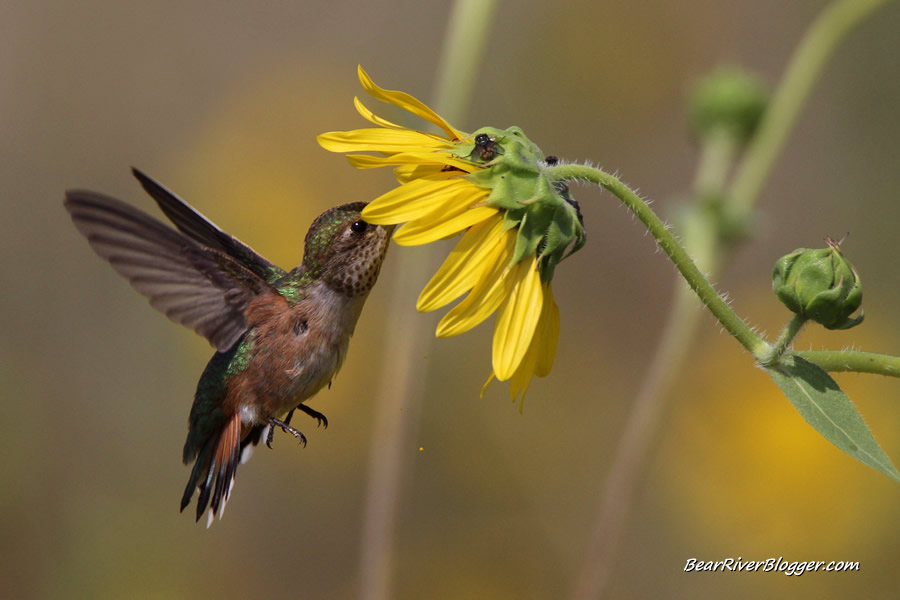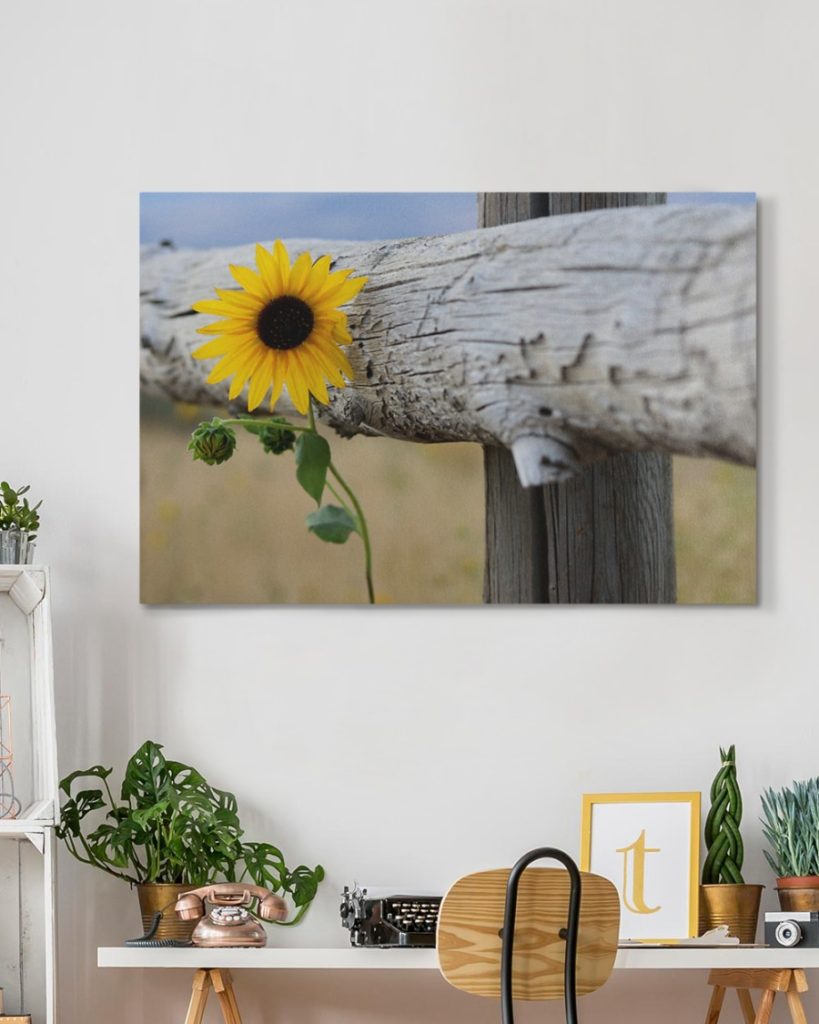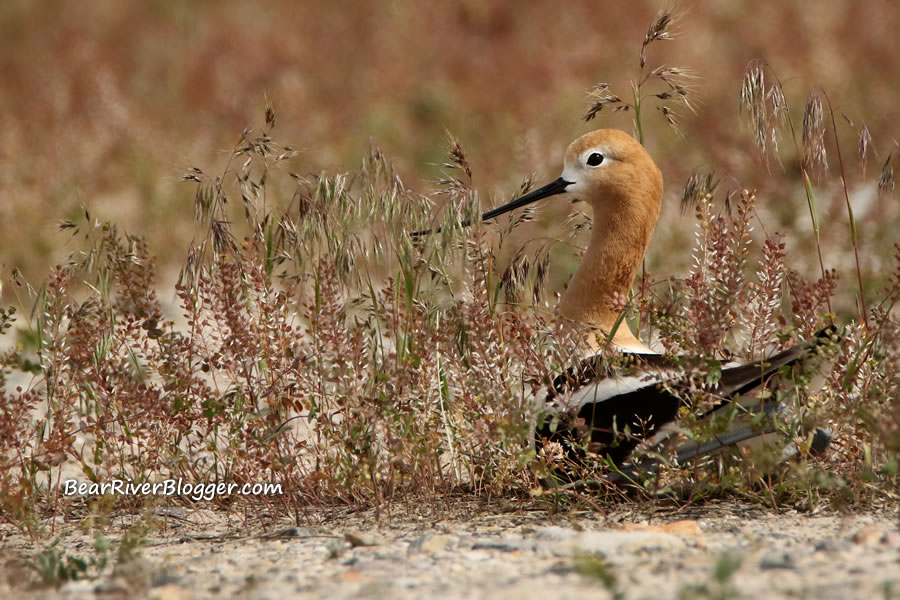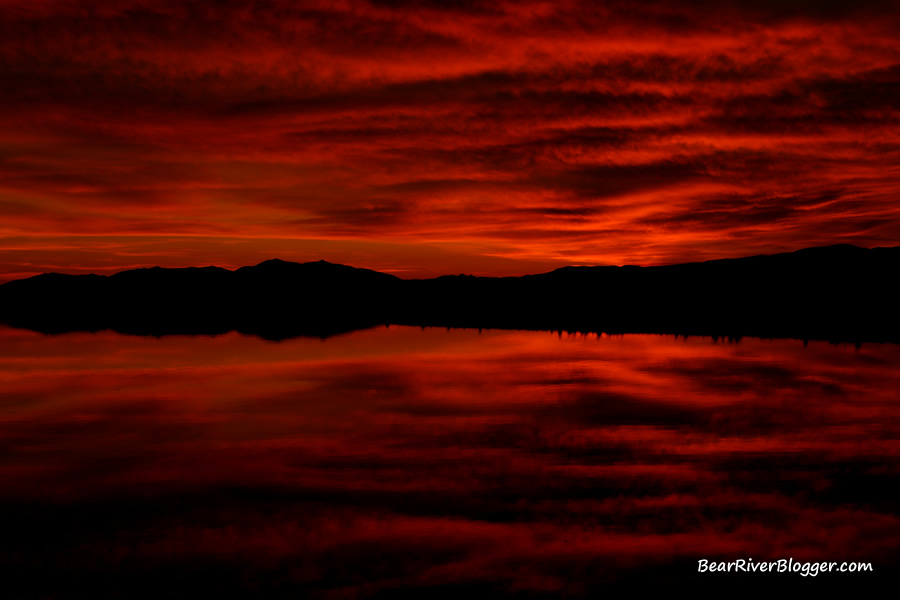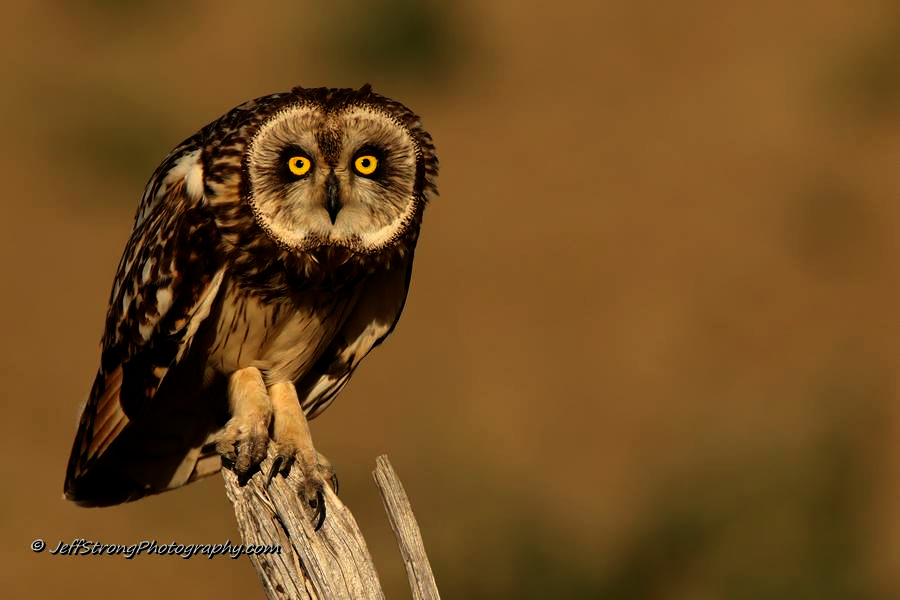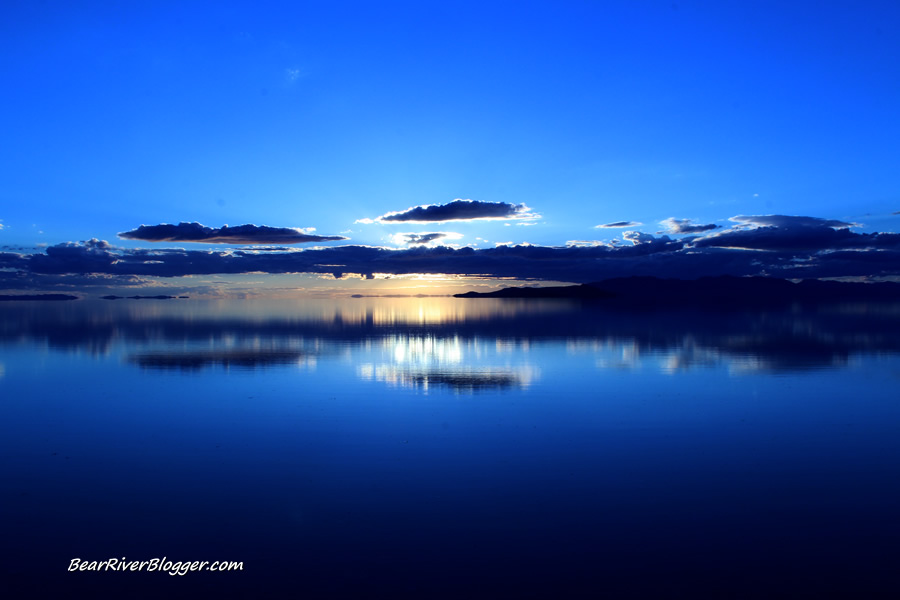If you read my recent post about finding hummingbirds on the Bear River Migratory Bird Refuge, it should be pretty clear I love to photograph hummingbirds against wildflowers.
But photographing hummingbirds can be a tricky situation, especially when you are trying to freeze the wing motion.
It all comes down to 2 things, available light and your shutter speed.
And those two aspects are highly connected to each other as well, how much light you have at your disposal greatly affects how fast you can run your shutter speed, plain and simple.
In a nutshell, in order to freeze hummingbird wings, use the fastest shutter speed you can run your camera at without going over 800 ISO.
The reason I set a limit on the ISO is the higher you set the ISO, the more noise it brings into your image.
I rarely to almost never use an ISO setting over 800, and it is actually pretty uncommon for me to even go as high as 800 on most days.
When photographing hummingbirds, I opt to bring more light into the equation by opening up the aperture, even as far as it will go if needed.
This does 2 things for us, it allows more light to hit the camera sensor, and it also helps blur the background behind the hummingbird, an effect I almost always shoot for in bird photos.
But I know what you are saying to yourself right about now, that’s all fine and dandy but what shutter speed do I use to freeze hummingbird wing motion?
The best shutter speed to photograph hummingbirds and freeze wing motion is 1/4000th of a second, but that is oftentimes not an easy shutter speed to achieve.
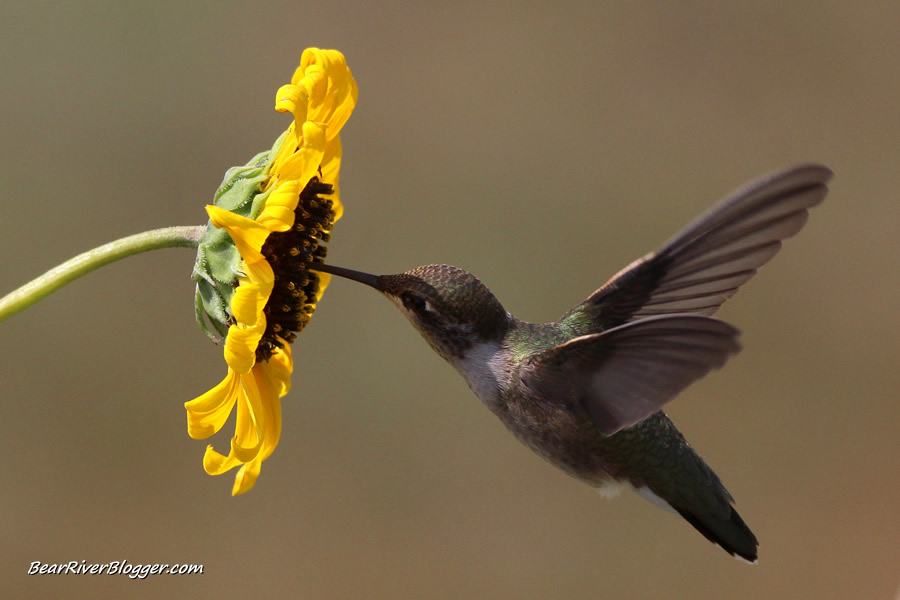
At the bare minimum, have your camera set for at least 1/2500th of a second, and preferably faster if you have the light to do so.
I photograph in AV (aperture-value) mode when photographing birds, mostly because it really helps blur the background while forcing the camera to run as fast as possible at the same time.
In my honest opinion coming from decades of photography experience, the aperture-value mode is the best camera setting for photographing hummingbirds or any other bird in flight you may come across.
The aperture-value mode allows you to set the aperture and the camera sets the shutter speed accordingly.
This might seem counterintuitive, and some would argue to use the time-value mode (TV) instead, but with the TV mode you have a lot less control over blurring the background as you do with the aperture mode.
Let’s take a look at a couple of examples from my time yesterday on the Bear River Migratory Bird Refuge auto tour route.

The first image, taken with a shutter speed of 1/3200th of a second, fell a bit short of freezing the hummingbird wing motion.
I had the aperture set at 6.3, and with the light conditions of the day, the only other thing I could have done to speed up the shutter speed to the desired 1/4000 would be to raise the ISO from 400 to 800, but I didn’t want to break from photographing so I stayed with what I had the camera set at.
This is a good example that traditional recommendations of shutter speeds 1/2000th of a second, suitable for most other birds, by the way, are definitely not fast enough for hummingbirds.
This second image, one that actually on the surface goes against having a shutter speed set at 1/4000th of a second, shows something that oftentimes happens with hummingbird photography.
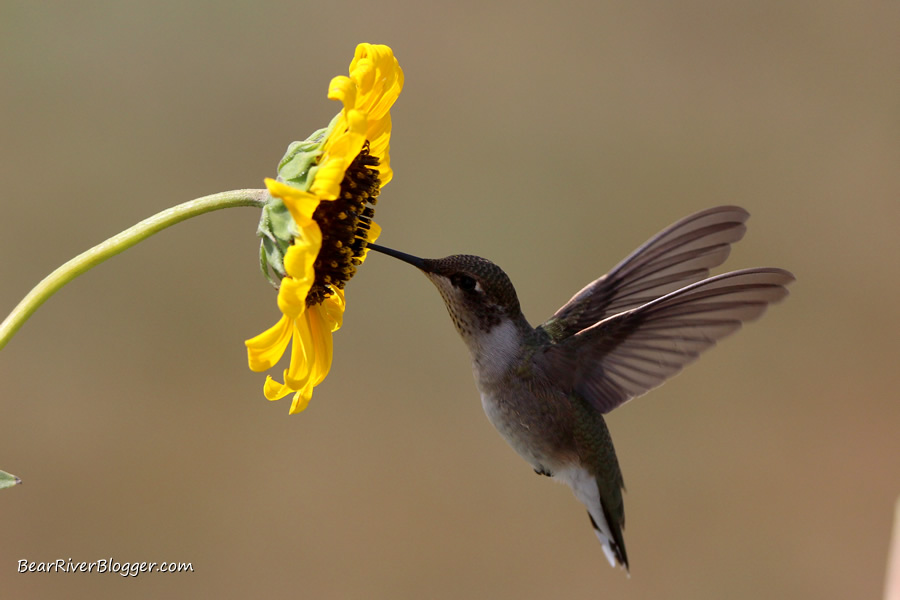
Photographed at 1/2000th of a second due to the shadow, this image appears to have stopped the hummingbird wing motion but it really hasn’t.
What happens when you photograph in burst mode, one of the images will capture the wing as it stops at the top or bottom of its travel before going the opposite direction.
This happens a lot if you take enough hummingbird images, but it isn’t the camera that’s actually stopping the motion, you just caught the wing at the top or bottom of its arc.
I have photographed hummingbirds at 1/4000th of a second and I still had some wing motion blur, so the rule of thumb is to use the absolute fastest shutter speed you can get without adding too much ISO noise into your images.
I hope this helps those that are looking to up their game in bird photography, particularly photographing hummingbirds in flight.
I appreciate your readership and if you are interested in birds and bird photography, I offer you to subscribe to my blog.
I try to entertain and enlighten as well as educate when I can about birds and photography. Those are two of my biggest passions and why I spend so much time in nature.
Birding and Nature Gifts
Take a look at my online store for shirts, sweats, hoodies, art, and more if you or someone you know likes nature as much as I do.
I appreciate your support by following my blog. Click the image below for more information about the sunflower canvas wrap print.

